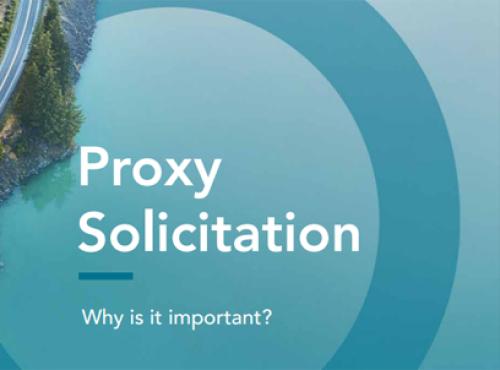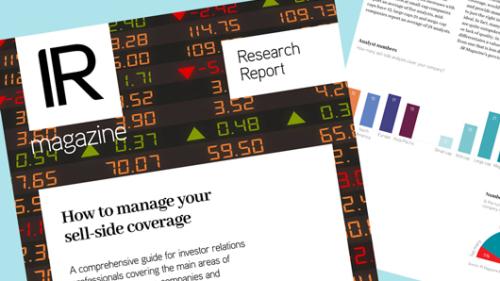Mary Ann Arico has worked to turnaround HealthSouth's IR following an accounting scandal. She is also contending with the implications of President Obama's healthcare reforms.
HealthSouth’s founder and former CEO Richard Scrushy is in jail, convicted of bribing Alabama’s governor amid accusations of massive accounting fraud. Having undergone a slew of restatements and divestitures since Scrushy was ousted in 2003, however, business goes on for the Birmingham, Alabama-based in-patient rehabilitation provider.
Last year HealthSouth brought in an IR pro whose experience in tense situations practically makes her a specialist. Mary Ann Arico has been helping win back the Street’s confidence, as well as the prize for most progress in investor relations at the IR Magazine US Awards 2009.
Arico rose through the ranks at Eastman Chemical to become IR director in 1998 during tough times for the chemicals industry: the aftermath of the 1997-1998 Asian currency crisis and Eastman’s failed demerger in 2001. She was on the front line, she recalls, regularly dealing with harsh words from shareholders. In 2002 she was recruited by Duke Energy to help cope with Enron aftershocks. Bondholders feared Duke’s approximately $22 bn debt could sink below investment grade, while equity investors were worried about a possible dividend cut. Tensions were high, but Duke averted disaster.
In March 2006 Arico joined Mirant Corporation soon after it emerged from bankruptcy and re-listed. Just weeks into her new job, Mirant bid for NRG Energy and Arico discovered that the shareholders – predominantly hedge funds that bought the distressed debt during the bankruptcy – were more interested in a short-term return than the long-term one management had envisioned.
Lessons from the past
Compared with some of those adventures, Arico’s job as senior vice president of IR at HealthSouth is much easier, she says. Under the leadership of CEO Jay Grinney, the company had been restructured and the fraud resolved over the previous four years. After all the turmoil, however, its financial picture was opaque.
Before deciding whether to join HealthSouth, Arico built her own financial models as if she were a sell-side analyst covering the company. ‘I found out just how hard it was for analysts to value HealthSouth,’ she recounts.
There were still non-recurring items floating through the income statement, which made it difficult for analysts and investors to cover the company, not to mention a pile of 8Ks about SEC and Department of Justice litigation and related fines. Arico realized that skills honed in previous jobs could make a big difference at HealthSouth.
‘In each case I had to reshape the story to match new conditions,’ she explains. ‘My first goal at HealthSouth was to take a huge amount of information and boil it down so that analysts could see it all in one place. With simple, direct and transparent communication, people began to see for themselves that there was a good story here.’
For example, she started making concise slide decks for quarterly earnings presentations and made the IR website easier to use. Arico notes that analysts have only so much time and a huge number of companies on their radar screen. ‘If you’re hard to analyze, they just won’t bother,’ she says. ‘When your market cap is small, you have to talk a little more loudly.’
Out of the frying pan
Arico had barely settled into her new office when the credit crisis arrived. As a highly leveraged small-cap company, HealthSouth’s stock was hit hard. ‘Generating cash, paying down debt, continuing to grow – in uncertain times, you may be saying the same thing over and over again, but you really can’t say it too much,’ Arico says.
In November, HealthSouth stuck to its plans for an investor day. It turned out to be perfect timing. With the market falling apart, Arico was pleased to get 80 people at the event. Between the live webcast and the archive, around 150 more covered it. In January Arico organized a site visit for a dozen analysts to one of HealthSouth’s 93 in-patient rehabilitation hospitals, and she hopes to stage another site visit later this year or early in 2010. ‘When people see firsthand what HealthSouth is doing, it drives home the business model,’ she says.
Lately, President Obama’s healthcare reform has started to take up more of Arico’s time. ‘There are so many questions from current shareholders and sell-side analysts, it takes away from the time I can spend with prospective new ones,’ she explains.
In late February HealthSouth mounted a unique response to Obama’s budget proposal. Part of the proposal, to ‘bundle’ post-acute care services, had investors especially confused. ‘No one understood bundling,’ Arico says. ‘It created so much uncertainty that people were selling our stock.’
HealthSouth didn’t have any new material information around the issue to announce, but Arico was cautious about providing interpretation within the bounds of Reg FD. So the company issued a press release followed by a special webcast to discuss ‘thoughts’ on the budget proposal.
The initiative got high marks from investors and analysts. ‘They were able to hear an interpretation of the budget proposal from a CEO with 27 years’ experience in the healthcare industry,’ Arico says. ‘Some of our analysts aren’t even 27 years old.’










